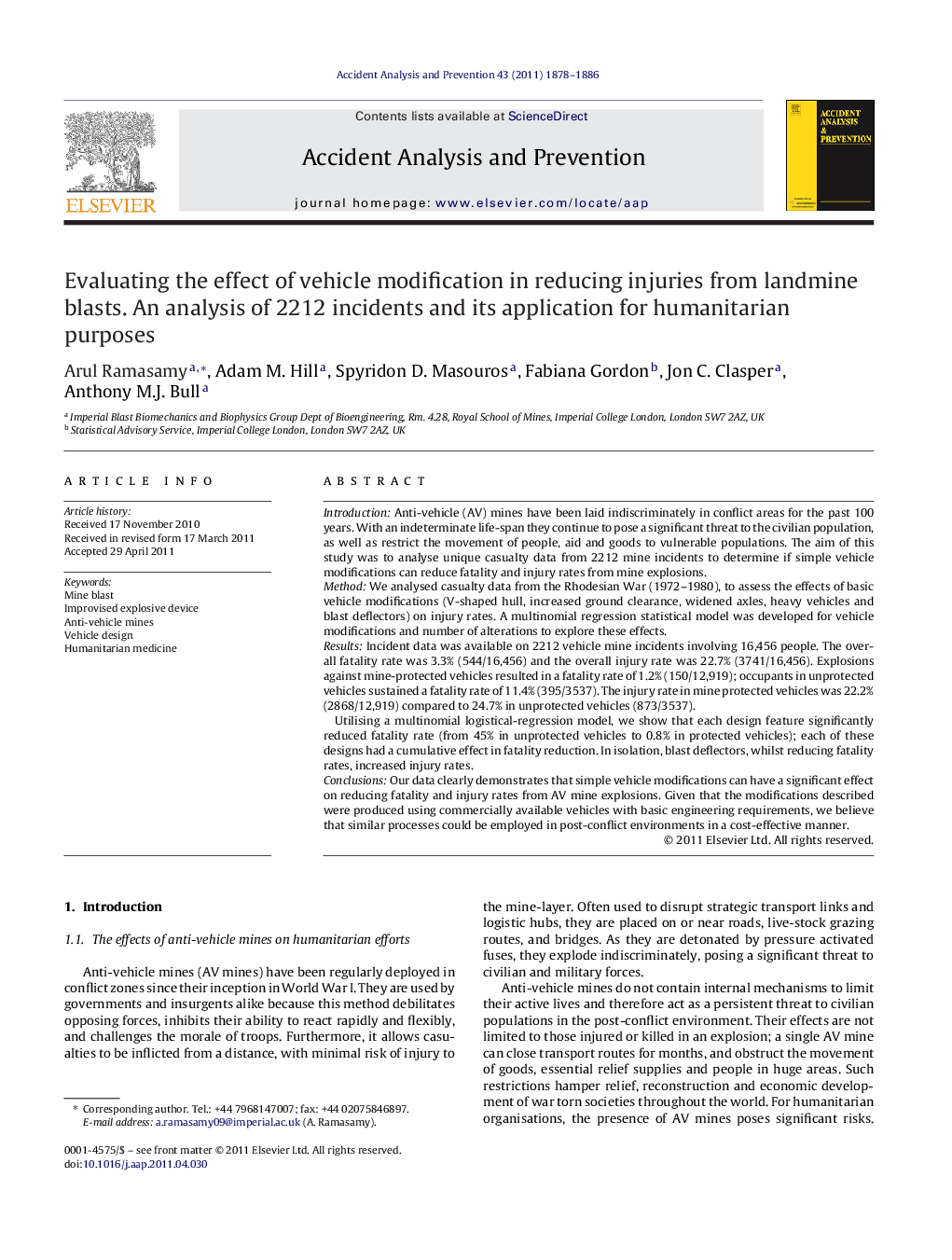| Article ID | Journal | Published Year | Pages | File Type |
|---|---|---|---|---|
| 572894 | Accident Analysis & Prevention | 2011 | 9 Pages |
IntroductionAnti-vehicle (AV) mines have been laid indiscriminately in conflict areas for the past 100 years. With an indeterminate life-span they continue to pose a significant threat to the civilian population, as well as restrict the movement of people, aid and goods to vulnerable populations. The aim of this study was to analyse unique casualty data from 2212 mine incidents to determine if simple vehicle modifications can reduce fatality and injury rates from mine explosions.MethodWe analysed casualty data from the Rhodesian War (1972–1980), to assess the effects of basic vehicle modifications (V-shaped hull, increased ground clearance, widened axles, heavy vehicles and blast deflectors) on injury rates. A multinomial regression statistical model was developed for vehicle modifications and number of alterations to explore these effects.ResultsIncident data was available on 2212 vehicle mine incidents involving 16,456 people. The overall fatality rate was 3.3% (544/16,456) and the overall injury rate was 22.7% (3741/16,456). Explosions against mine-protected vehicles resulted in a fatality rate of 1.2% (150/12,919); occupants in unprotected vehicles sustained a fatality rate of 11.4% (395/3537). The injury rate in mine protected vehicles was 22.2% (2868/12,919) compared to 24.7% in unprotected vehicles (873/3537).Utilising a multinomial logistical-regression model, we show that each design feature significantly reduced fatality rate (from 45% in unprotected vehicles to 0.8% in protected vehicles); each of these designs had a cumulative effect in fatality reduction. In isolation, blast deflectors, whilst reducing fatality rates, increased injury rates.ConclusionsOur data clearly demonstrates that simple vehicle modifications can have a significant effect on reducing fatality and injury rates from AV mine explosions. Given that the modifications described were produced using commercially available vehicles with basic engineering requirements, we believe that similar processes could be employed in post-conflict environments in a cost-effective manner.
► Anti-vehicle mines pose a significant threat to civilian populations. ► Modern mine-resistant vehicles are expensive and unsustainable in post-conflict areas. ► We demonstrate that simple vehicle modifications can reduce fatality rates from 11.4% to 1.2%. ► The use of V-shaped hulls, increased ground clearance, wide axles and heavy vehicle mass can reduce injury and fatality rates significantly. ► These simple design modifications can be applied to commercial vehicles in a cost-effective manner and aid reconstruction efforts in post-conflict areas.
